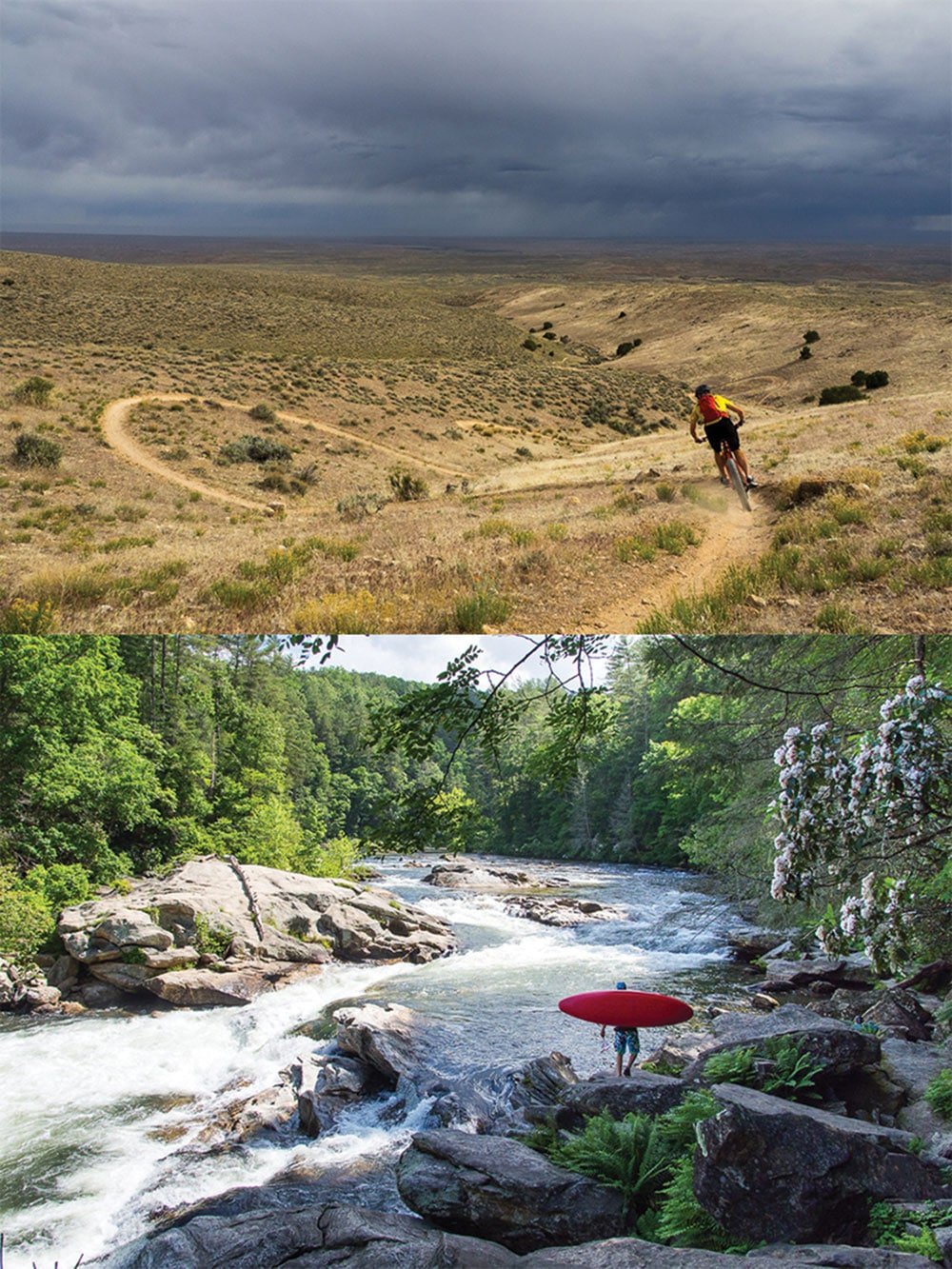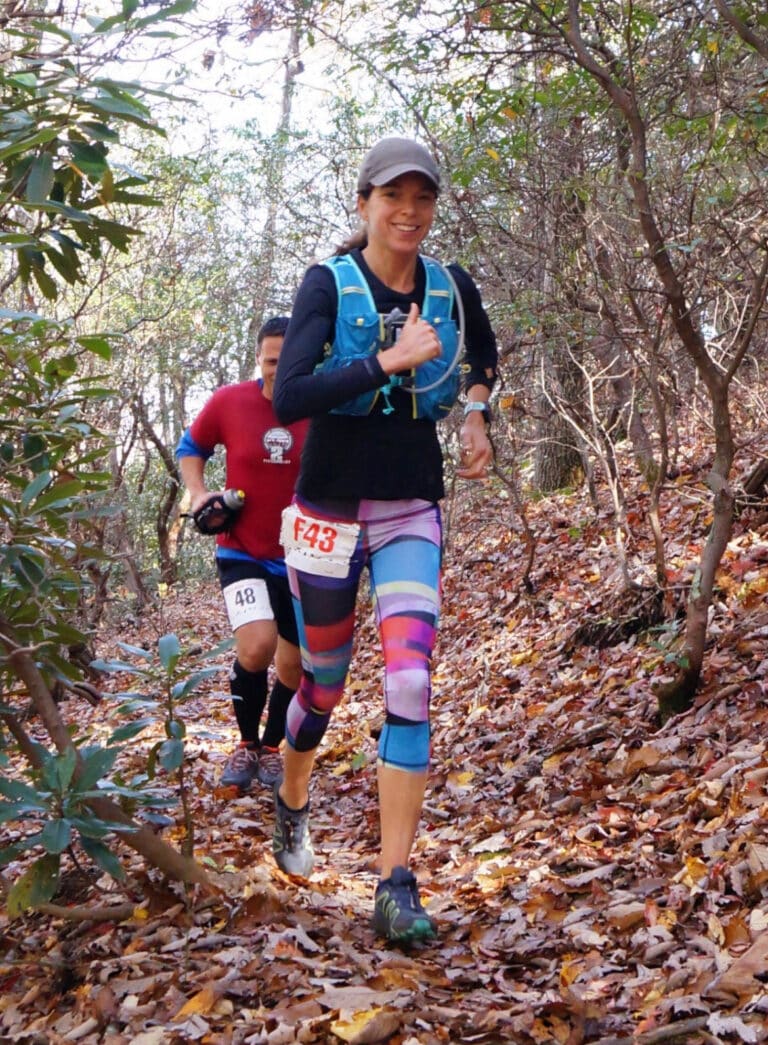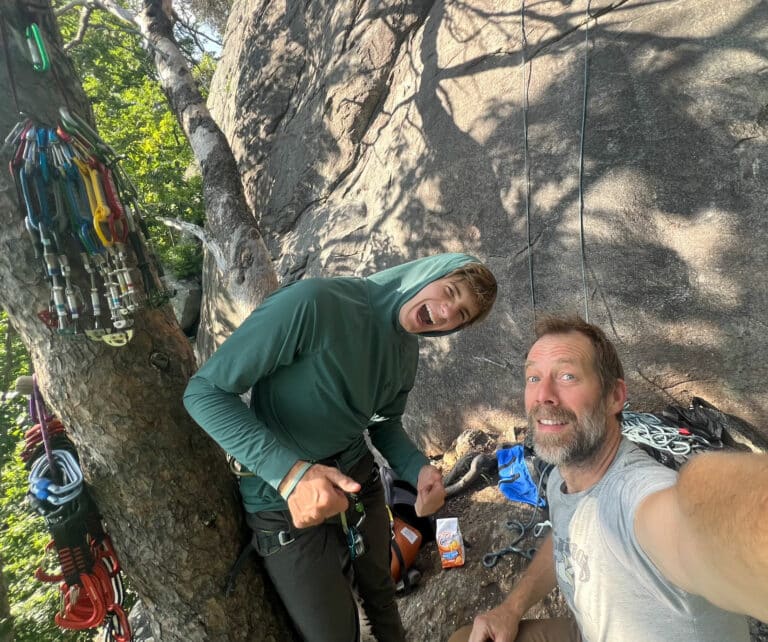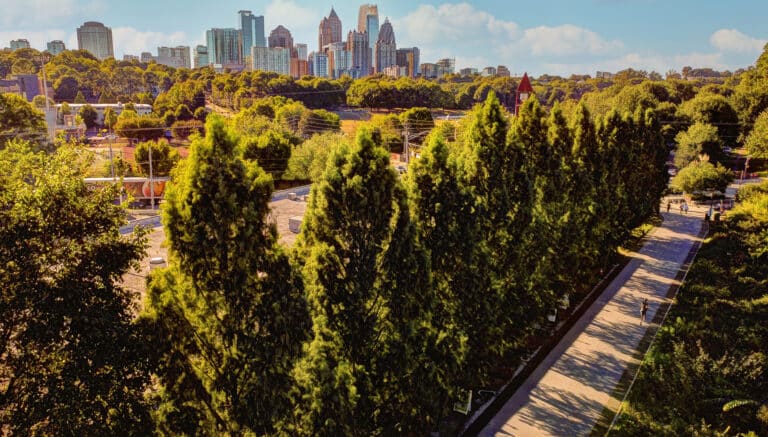An Adventurer Finds a Similar Pull towards the Recreation Opportunities—and the Heat—in Seemingly Opposite Regions
“Want to open a car wash in this town?” The question was posed by a young traveler from North Carolina, directed at the local fly-fishing guide sitting between us. We were spaced out in the dive bar of a false front town in one of those colorful badlands found throughout the Southwest.
“Yes, definitely.” The guide nodded.
Given that I was also a dirtbag adventurer who spent part of the year in the green-leaf Southeast and part in the red-rock Southwest (and I’m always looking for get-rich-quick schemes to keep the show going), I was slightly disappointed at not being invited to go thirds on this spontaneous business proposition. Hey, I’ll scrub pickups for cash!
After sealing the tentative plan with a fist-bump, the guide left, and I asked Charlotte, the traveler, his reasons. He’d be out of money soon and was looking to extend his stay in the arid Southwest before returning to the humid Southeast. This dusty town didn’t have a car wash.
All seemed to check out—though we didn’t discuss what water costs around here. Next, we shared favorite spots to visit. Not surprisingly, there was plenty of overlap within the two regions we frequented the most.
A few years ago, I glanced at a U.S. map and realized that almost every place I have lived and regularly visited spanned the Lower 48 along roughly the same latitudes. Like a shifting electron, my so-called orbital of likely locations was a band running between about 34° and 39°, north latitude.
Sure, I’d taken a few U.S. trips ranging farther north and south. But among dozens of east-west trips, I rarely strayed much beyond a 350-mile corridor, north to south. California, the Colorado Plateau, and southern Rockies on one side. Appalachians and Carolinas on the other. My main exception, the Ozarks, was right in the middle. With the U.S. reaching from 25° in southern Florida to 49° at the Canadian border, I was basically fixated on 20 percent of the country. The remainder might as well have been in France (~47°).
Was I less adventurous than I thought? Did I fear that Gulf Coast heat would melt my face? That far northern winters would freeze me in place? Maybe I subconsciously loved the number 37? Observing a similar travel pattern from not just Charlotte (35.2°) but other travelers, I put out some inquiries to friends and social media contacts who regularly spent time in both the Southeast and Southwest.
One of the first people I called was my buddy Curtis Ahlers, in St. Louis (38.6°), where I lived for 10 years. About half our adventure days were local and half were afar. We whitewater kayaked rivers throughout the Southeast, with plenty of days on the class III middle and class IV upper Ocoee in Tennessee (35.1°). We mountain biked the world-class trails in Bentonville, Arkansas (36.4°). We skied in the Rockies, but especially along the I-70 corridor, including Winter Park, Colorado (39.9°). And we’d launched multiweek raft trips down big western rivers like the Colorado through Grand Canyon in Arizona (36.1°).
“Hey, have you ever noticed how we mostly travel around the 37th parallel?”
Silence.
“Huh?”
After considering, Curtis agreed he spent most trips in the Southwest or Southeast. Homing in on practical considerations, he pointed to I-70 being a straight shot to Denver (39.7°) for skiing, paddling, biking, and hiking. Plus, I-24 offered a direct line to Chattanooga, Tennessee (35°) for much of the same.
The interstate point was valid. I’d noticed that my travel band was roughly delineated by I-80 and I-70 in the north, and I-40 in the south—and increasingly so, as I traveled between past and new homes. But there had to be more to it, right? Within a comparable range of Chattanooga and Denver (500 to 850 miles), we could have reached the Boundary Waters (~48°) where neither of us had been, or the Gulf Coast (~30°), where we had each gone just a few times.
This shifted the conversation to the activities we chased in both regions. When we were younger we were, admittedly, more adrenaline focused, which required mountainous topography like what’s found in Salida, Colorado (38.5°) or Fayetteville, W.Va. (38.1°). But we’d also done plenty of mellow activities in each region, like float trips near Moab, Utah (38.6°), or day hiking near Brevard, N.C. (35.2°).
“The debate was live in western North Carolina and visit the southwest,” recalled Liz Johnson, a social media contact of mine. “Or vice versa.”
Liz grew up near Asheville (35.6°), mostly horseback riding when she was young. In her twenties, she took a job on a guest ranch near Steamboat Springs, Colorado (40.5°) and fell in love with the mountains and high desert. Since that time, she’s lived 12 years in the Southwest—including Grand Junction (39.1°) and Durango (37.3°)—and one year in the Southeast, where she visits yearly. Now she mostly hikes and rafts, with one of her top praises being the small-town atmospheres that can be found in both regions.
Liz echoed a similar feeling shared by Curtis and me—that the bipolar pull of these two seemingly opposite regions is the variety within the same activities. In the Southeast, you can hike over rainforest ridges to massive waterfalls, summit granite balds, mountain bike hero-dirt flow trails, and paddle rocky creeks. In the Southwest, you can hike through cactus-filled deserts to hidden slot canyons, summit eroded mesa tops, mountain bike slick-rock sandstone trails, and paddle through broad valleys and deep gorges. These same but different opportunities are a major draw for adventure travelers. But what else?
“I love the heat in both regions,” said Chelsea Metzger, another social media contact, who appreciates both the humid heat of the Southeast and the dry heat of the Southwest—especially when it comes to paddling trips.
During her mid-20s, Chelsea moved from Southern California (~34°) to the Southeast, which now feels more like home to her. She praises the sharp contrasts of the two regions—thick Southeastern woods showcasing four sharply distinct seasons versus the wide expanses and desert wilderness areas of the Southwest.
Chelsea’s comment about temperatures got me thinking about seasonal daylight—travelers can expect the same day length in each region. Of course, there was probably a fair-weather component, as well. Sticking to climates that are within a familiar range. In the Southeast and Southwest, this allows for many non-snow activities to be pursued year-round.
Maybe some Americans were naturally east-west inclined, given how the U.S. expanded during its first 120 years? Go west, we say, go back east. Even our mountain ranges—tall and abrupt in the Southwest, more eroded and rolling in the Southeast—mostly trend north-to-south. In some ways, maximum variety can be reached by heading east or west. From chatting with just a few friends, there were clearly plenty of reasons.
“Maybe it’s a comfort thing?” added Curtis, wondering if once a person has been to both regions, and decided they like them, they just keep going back. “Feels like home.”
Cover photo: The author splits his time between the desert singletrack of the southwest and the forested rivers of the southeast. Photos by Mike Bezemek








